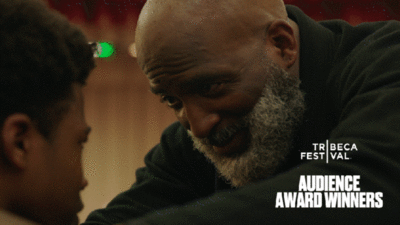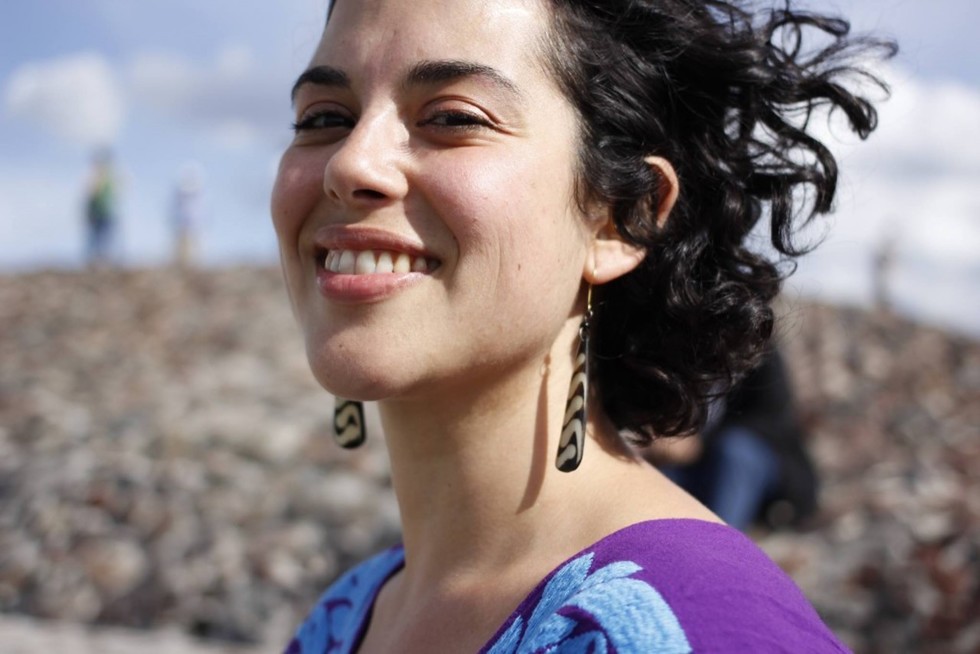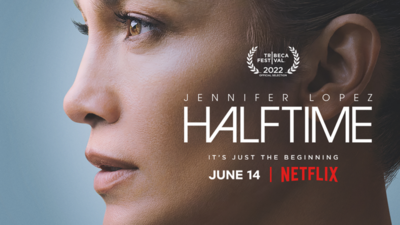
BY BARBARA CALDERÓN-DOUGLASS |
Meet Raquel De Anda, the Curator Using Interactive Art to Take on Police Brutality
Our friends at Remezcla caught up with the one of the creators behind The Argus Project, part of Tribeca 2016's Storyscapes program.

Raquel de Anda is a cultural organizer and advocate for diversity in the arts who's bringing international public art projects to light as a curator and producer. She's organized art shows such as ChicaChic: La Nueva Onda, and other transmedia projects like Question Bridge: Black Males, a project that aimed to break down stereotypes about the black male. You can also thank her for getting groups like Culture Strike and Ropavejeros to make art installations for the historic People's Climate March in 2014. Her work is multifaceted yet consistently retains the element of social justice at its root. Her most current endeavor is working as the executive producer on The Argus Project, a performance intervention about police accountability that will debut in Tribeca 2016's Storyscapes program.
Growing up outside the city limits of Laredo, Texas, de Anda has what Chicana feminist and theorist Gloria Anzaldúa calls a "consciousness of the Borderlands" where you're integrally a part of two worlds and develop a dual understanding of the world. This upbringing is stamped on all the cultural work de Anda does. "Being bilingual, bicultural is at the heart of who I am," she says. "Part of that is trying to understand how other people see the world, how we can use culture to extend those difficult conversations about race and social justice in our country and give them a wider reach."

During undergrad at Middlebury College, de Anda discovered her love for working with artists to create experiences rooted in culture when she helped found the college's first artspace. She then began her post-grad career at Galería de la Raza, a San Francisco gallery created out of a need for Latino representation in the arts. In 1970, when Galería was founded, "If your last name was González or Rodriguez there was no place for you to show your work," says de Anda. "You had been erased and were not validated in the art world." She worked there for seven years putting together shows like Pistolitas de Azucar about the influence of Mexican culture on American pop culture and No Distance is more Awesome, a show about the effects of immigration policy on Latin Americans. It was at Galería de la Raza where she learned about the power of extending art projects beyond the gallery. "Galleries are great to show work and to discuss the power of artwork," says de Anda, "but that power really resonates when you can extend outside of those walls."
This idea of moving beyond the gallery walls is at the heart of what is called transmedia production such as work like The Argus Project. Transmedia storytelling involves using various media to directly engage your audience. The Argus Project does this by opening up dialogues around solutions to ending police brutality. In the latest installation at Project Row Houses in Houston, the Argus Project showed a 23-minute film, displayed an informational timeline about the history of police monitoring, and presented the interactive suit, a wearable sculpture that has built in cameras, lights and looks like a cross between RoboCop and Batman. (The figure Argus is the name of a 100-eyed watchman from Greek myth.) "One of the great things about the piece," says de Anda, "is it's using mythology and superhero culture as a way to pull people into a very serious conversation about police accountability and brutality."

De Anda described a moment at the opening when an 8-year-old kid ran up to the suit saying, "Whose team is this guy on?! I want to be on his team!" She then invited him and his grandma to attend a discussion about how to protect their communities from the police. "Transmedia is something that's really important to us because it's not something that begins in the gallery," she says. "It’s something that begins in communities where these issues are arising." After being shown at Storyscapes, the Tribeca Film Festival's transmedia showcase next week, the suit will be sent to protests, different Copwatch deployments, and will travel to police-watching trainings and workshops.
De Anda recently won the "Artist as Activist" Rauschenberg Fellowship in 2015 for her work with the People's Climate Arts collective, and with many successful public art projects behind her back, it seems she'll only continue to create a space for social activism in the arts. If you're an artist, culture creator, or arts advocate with social activism in mind, Raquel de Anda is a role model worth imitating. Her collaborations and future undertakings will help pave the way for establishing new models for creative intervention into tackling social problems through art.

For a chance to win a pair of tickets to attend Storyscapes and see The Argus Project, enter here.
We partnered with Remezcla to give you a behind-the-scenes look at the Latino talent at this year's fest. Follow their coverage on remezcla.com


